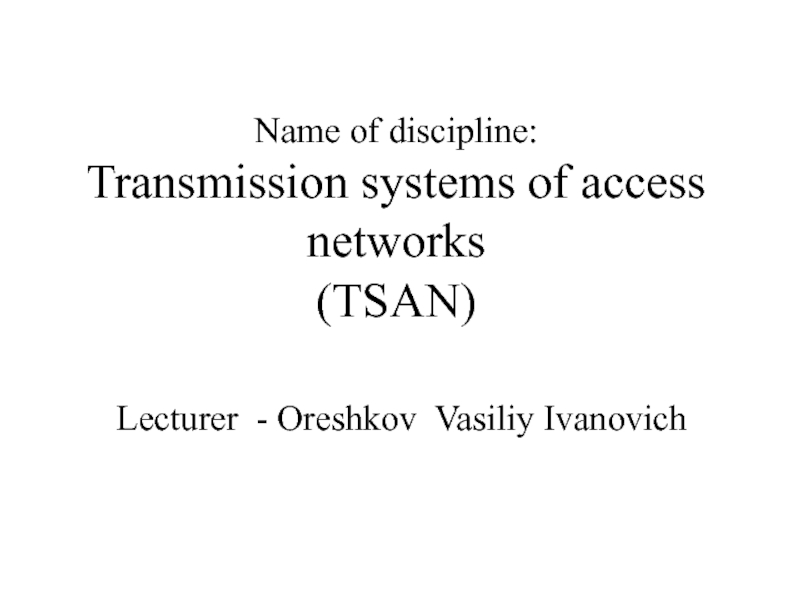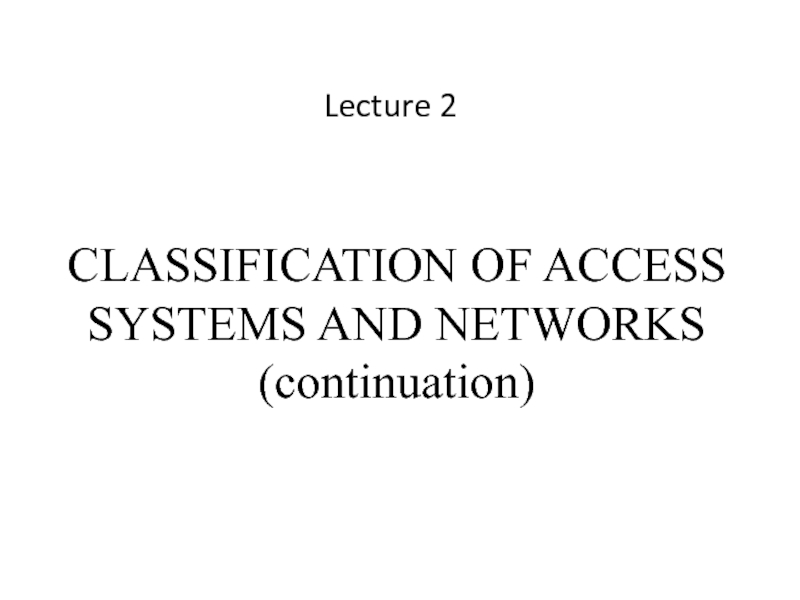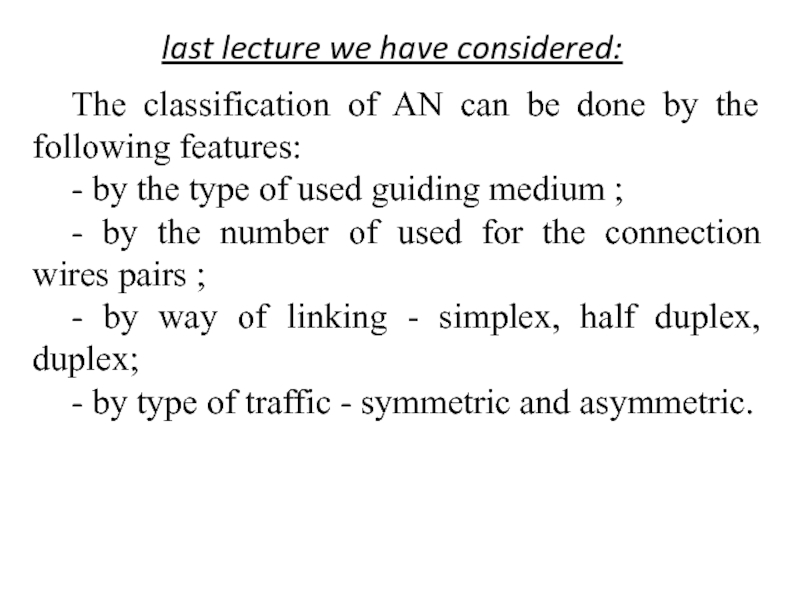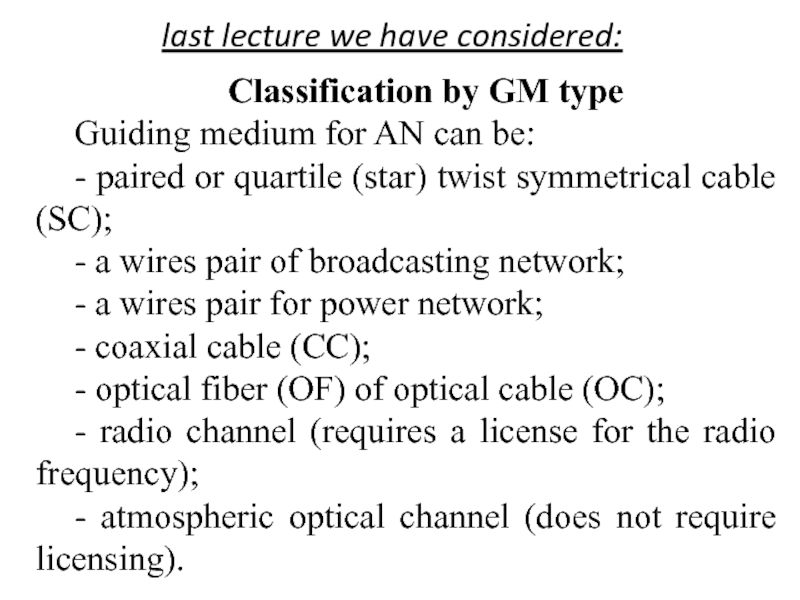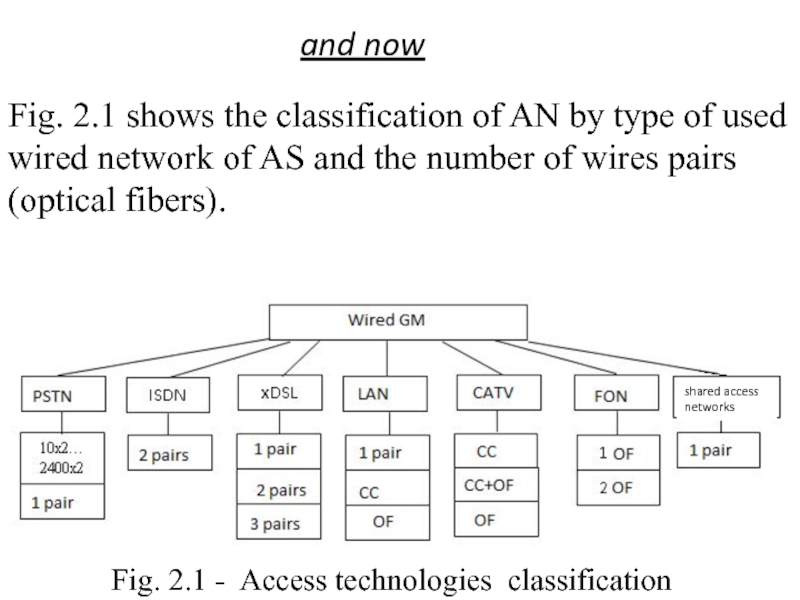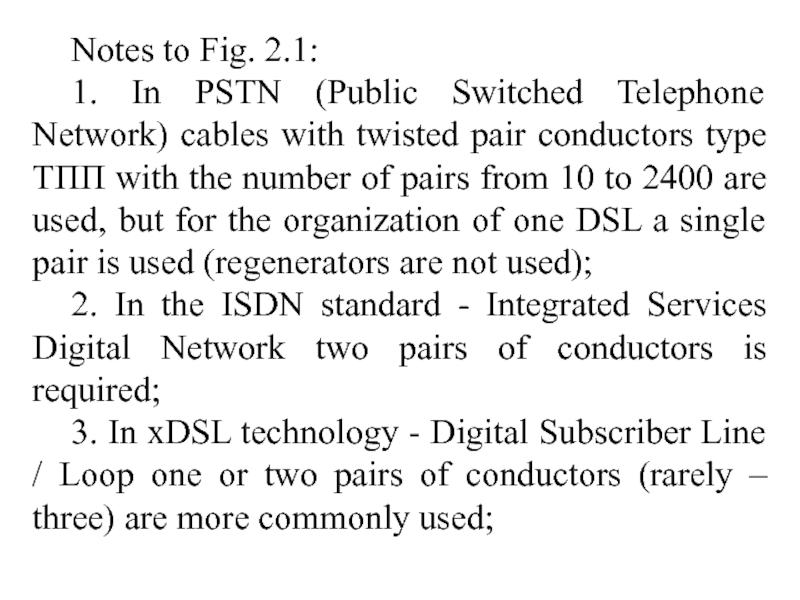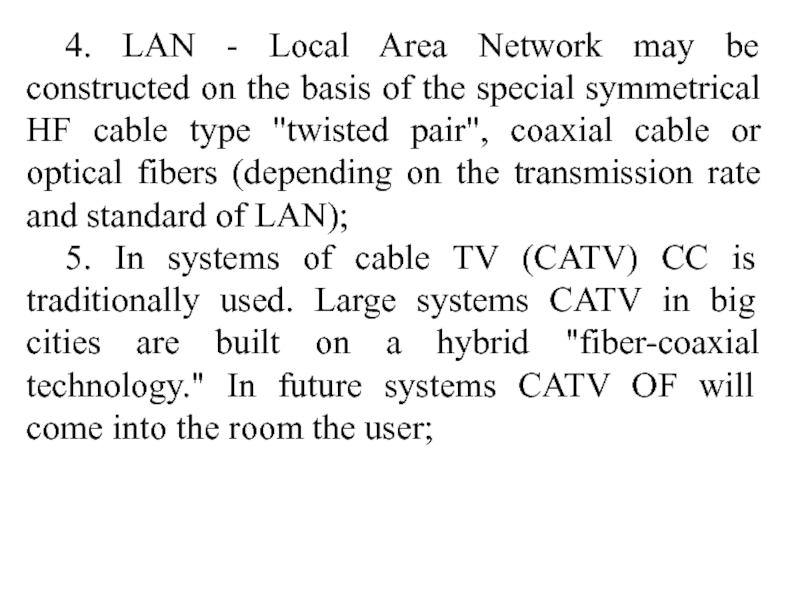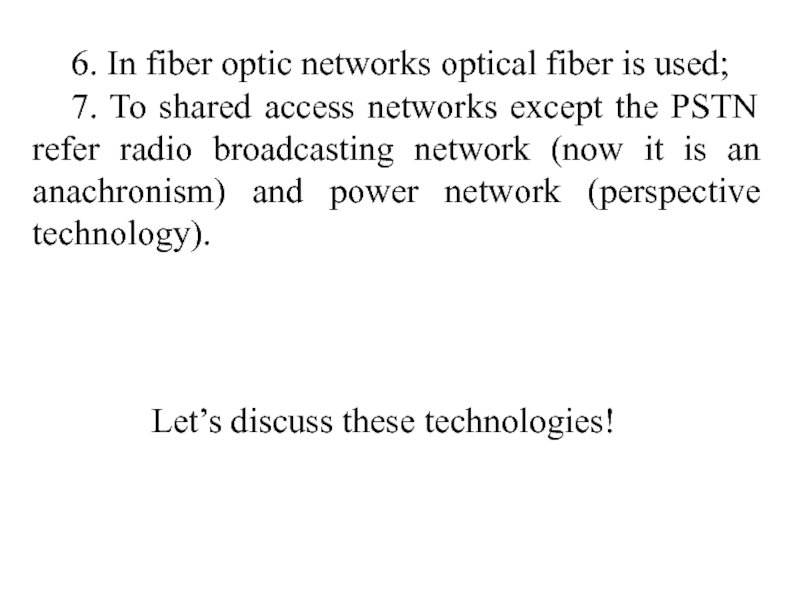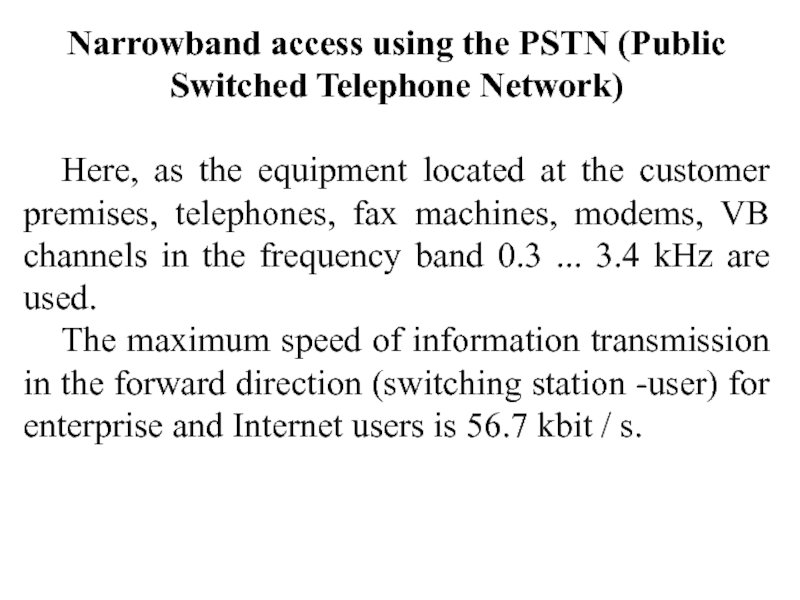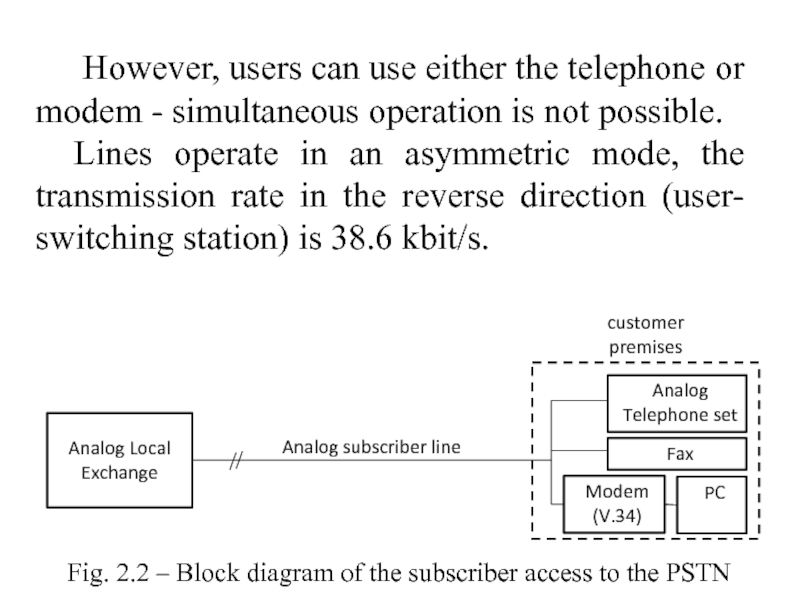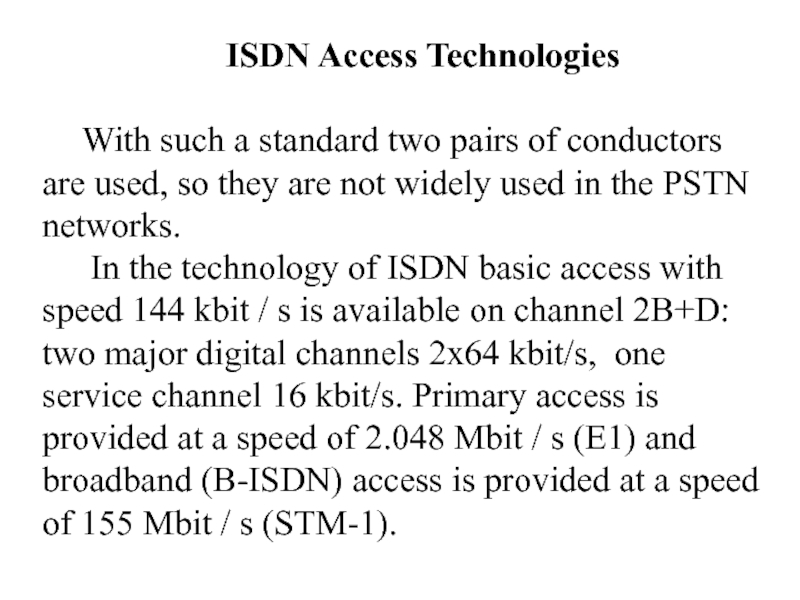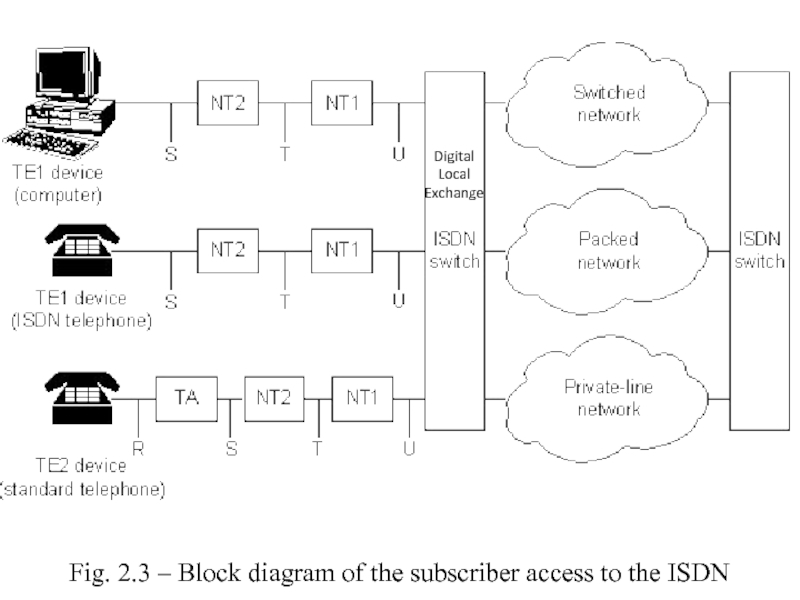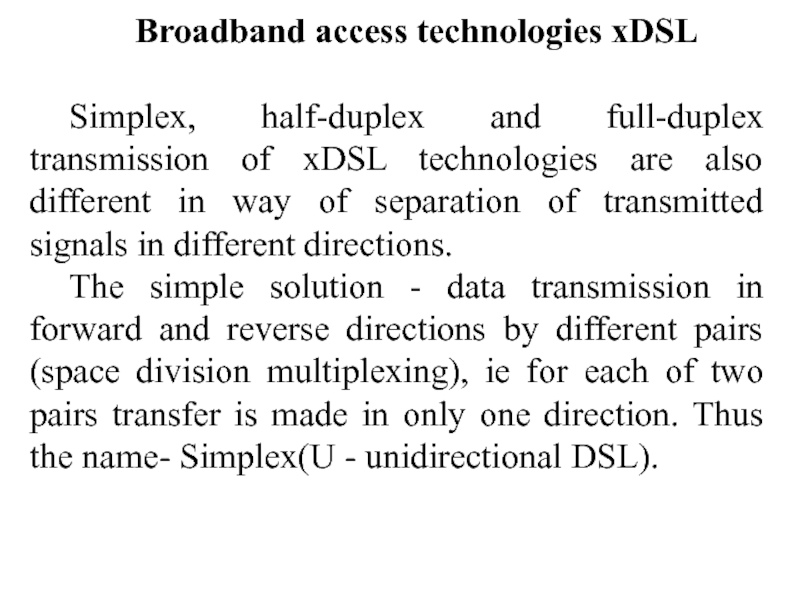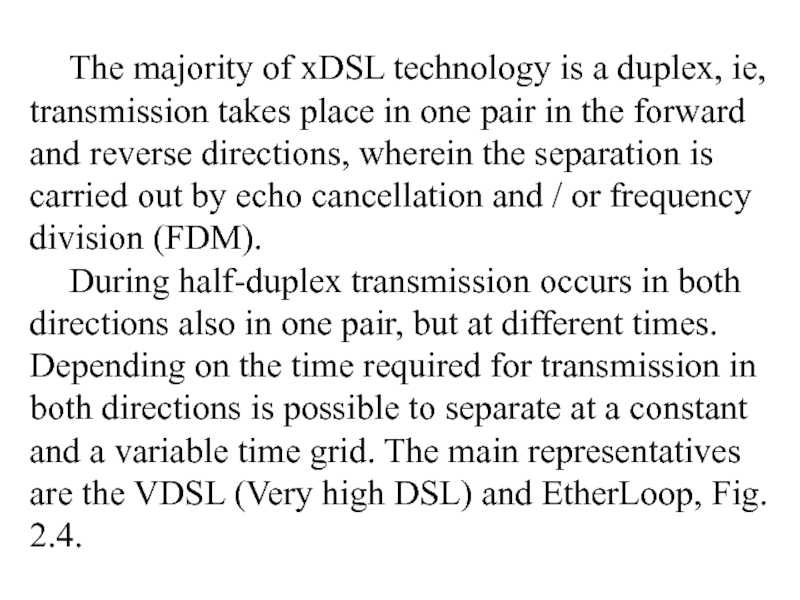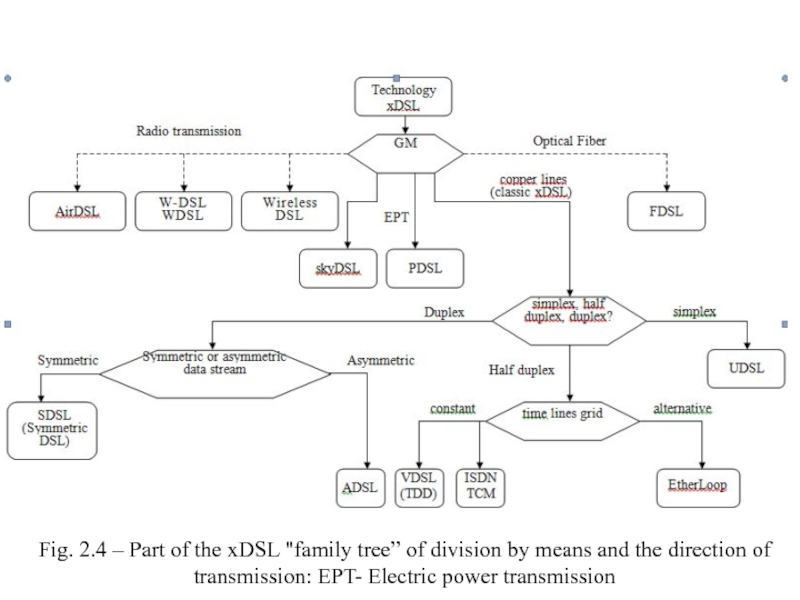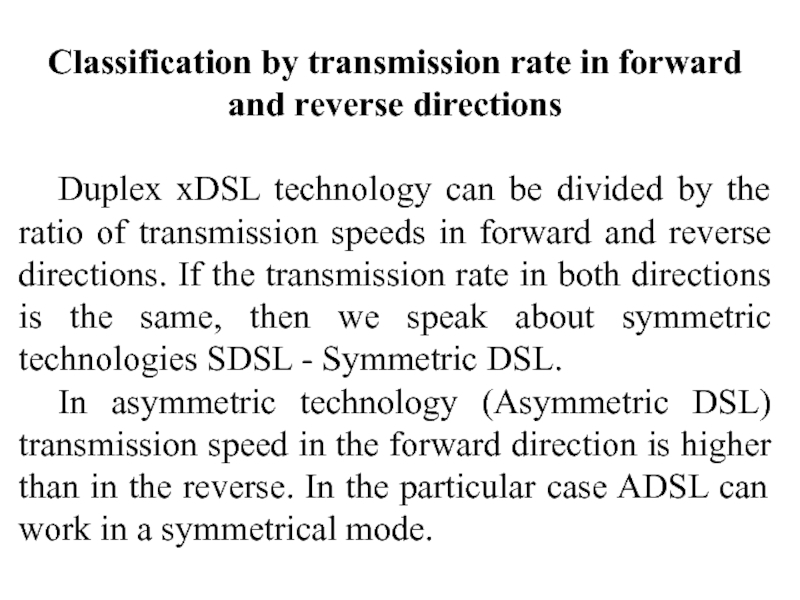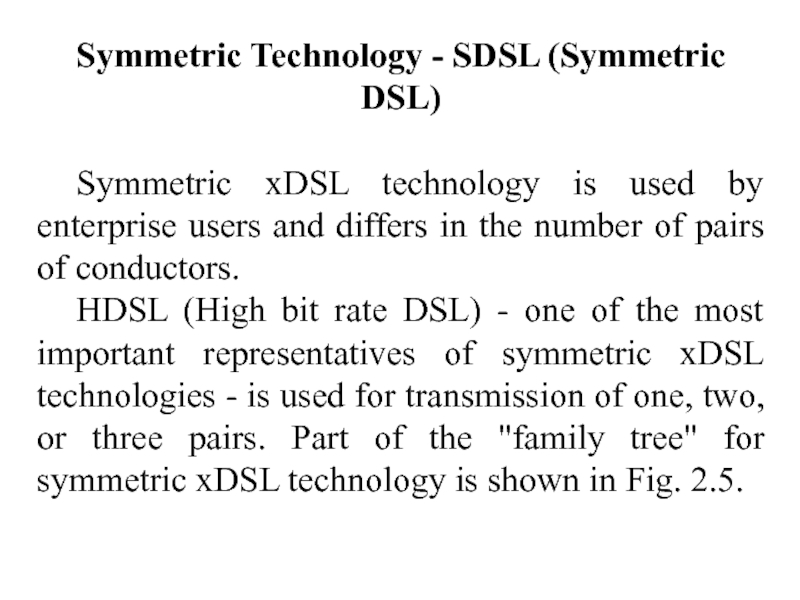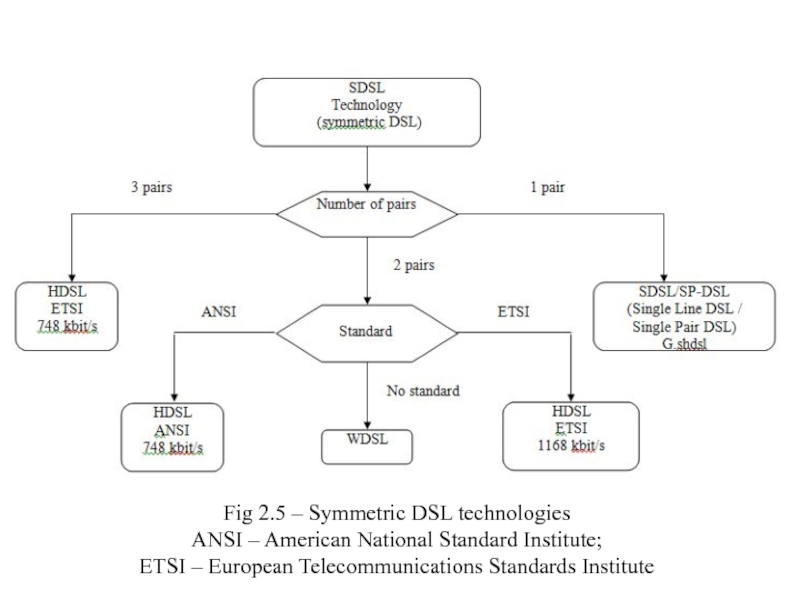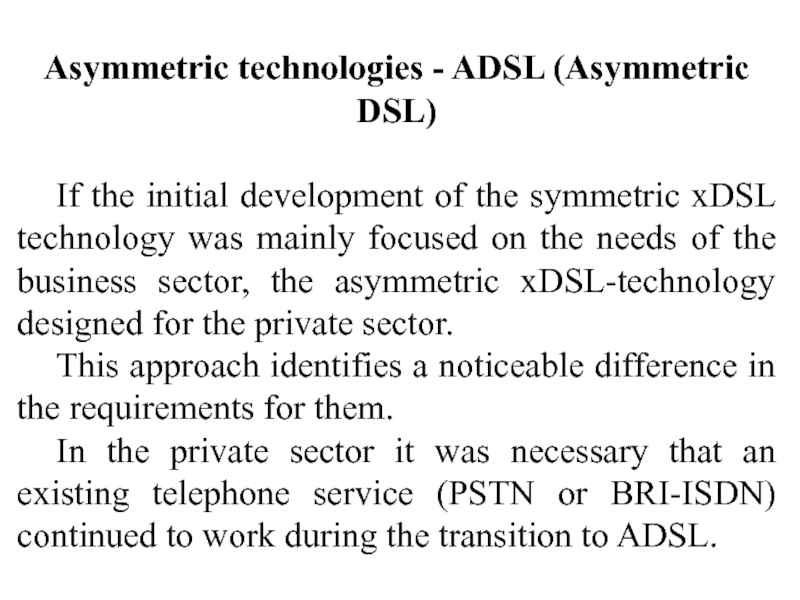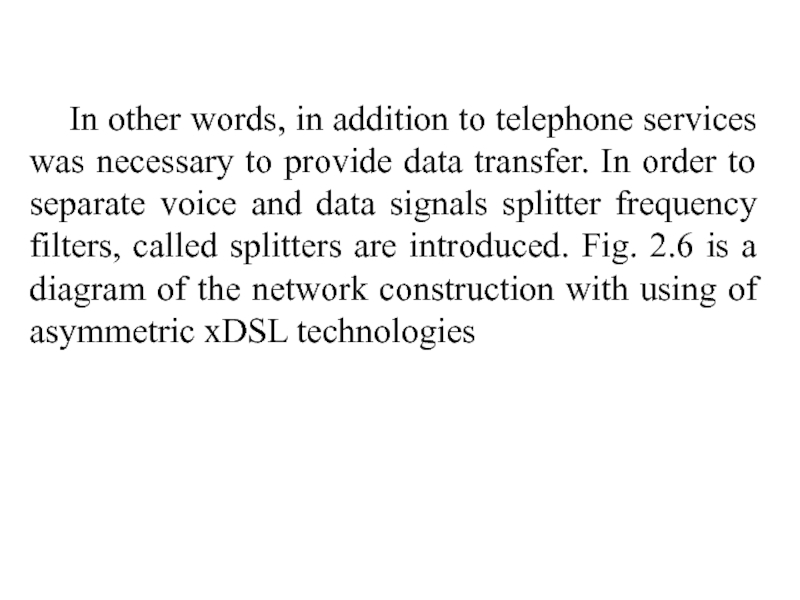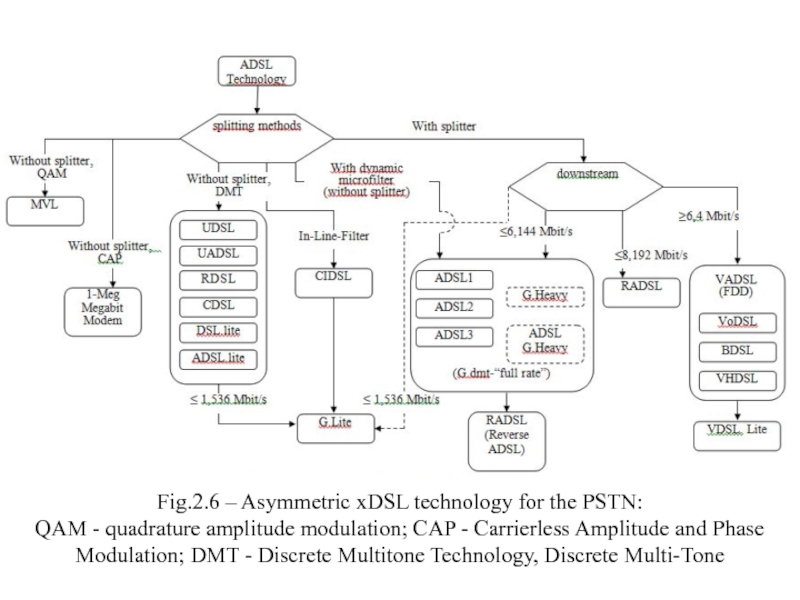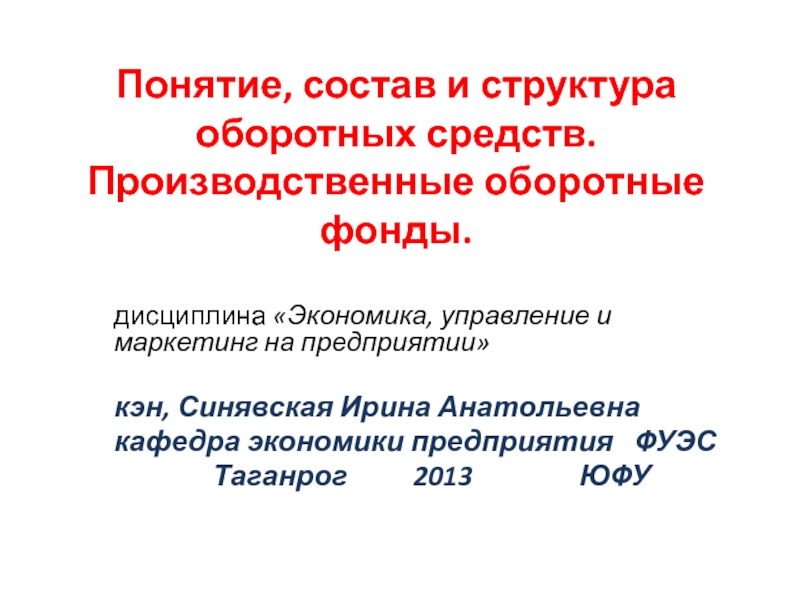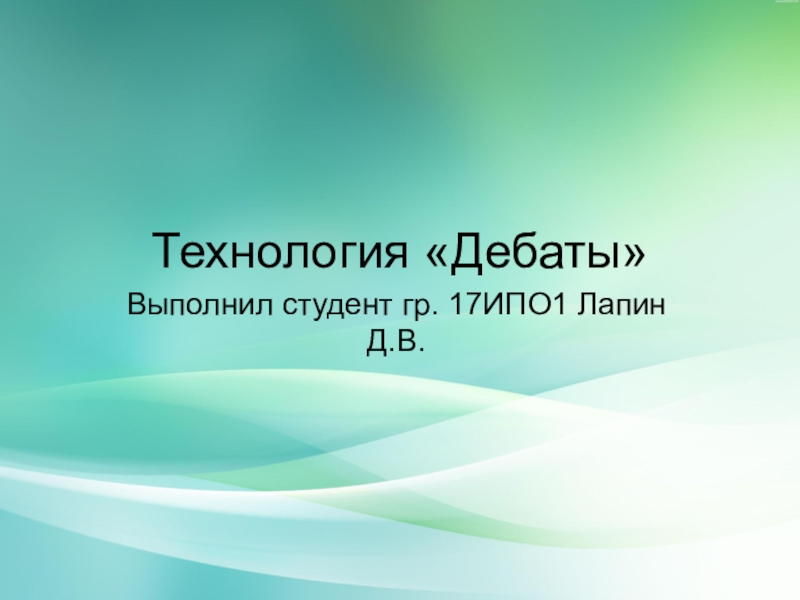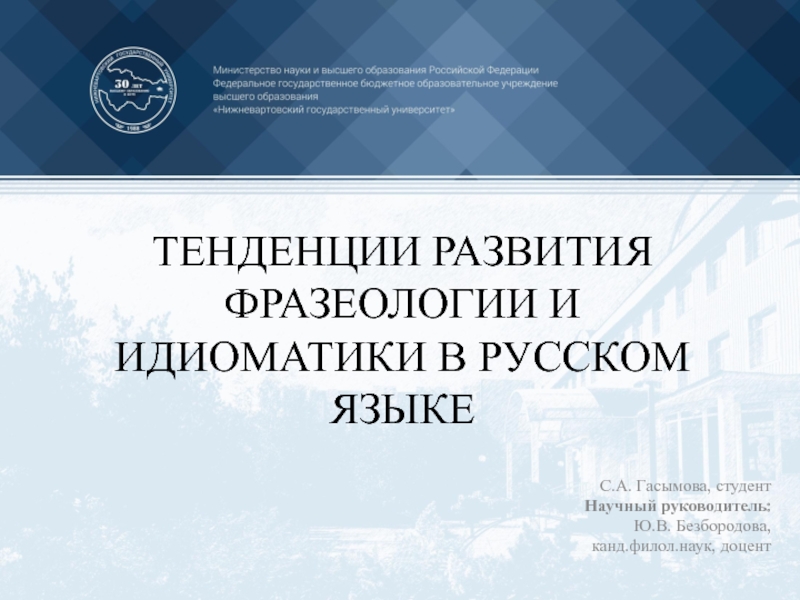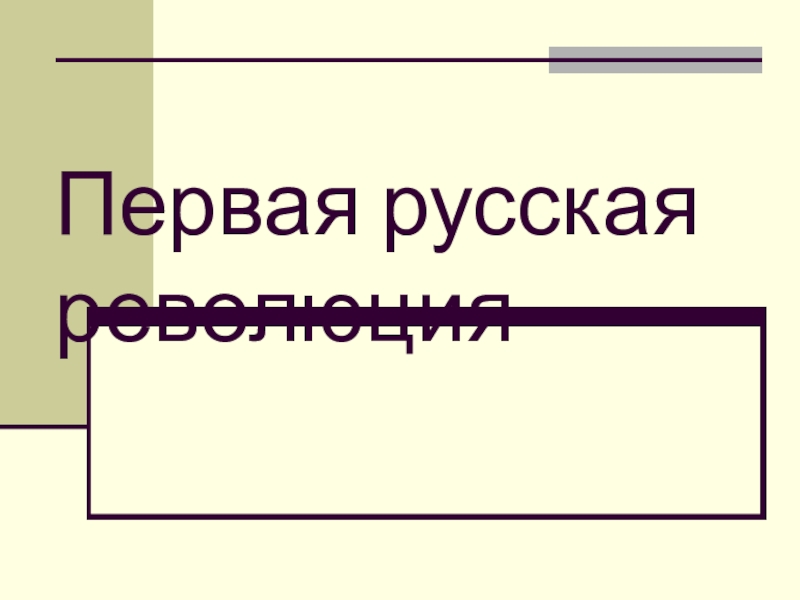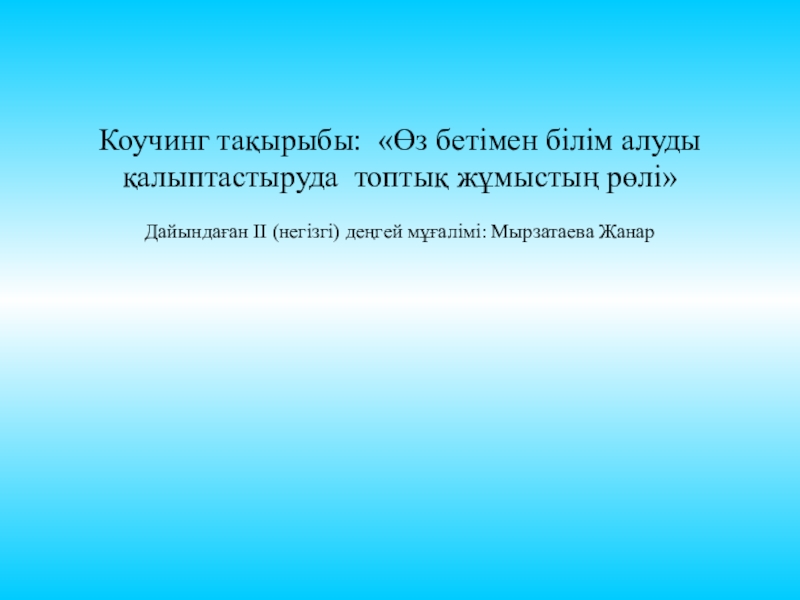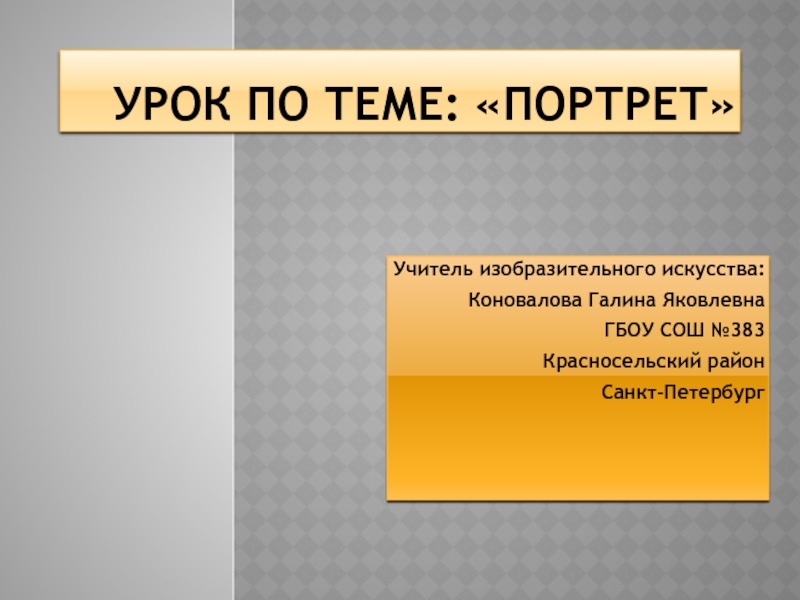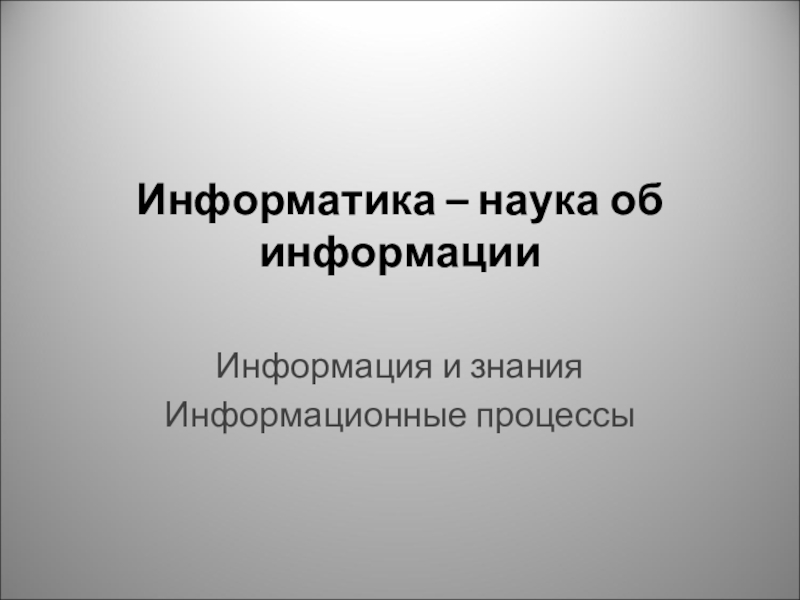Разделы презентаций
- Разное
- Английский язык
- Астрономия
- Алгебра
- Биология
- География
- Геометрия
- Детские презентации
- Информатика
- История
- Литература
- Математика
- Медицина
- Менеджмент
- Музыка
- МХК
- Немецкий язык
- ОБЖ
- Обществознание
- Окружающий мир
- Педагогика
- Русский язык
- Технология
- Физика
- Философия
- Химия
- Шаблоны, картинки для презентаций
- Экология
- Экономика
- Юриспруденция
Name of discipline : Transmission systems of access networks ( TSAN) Lecturer -
Содержание
- 1. Name of discipline : Transmission systems of access networks ( TSAN) Lecturer -
- 2. CLASSIFICATION OF ACCESS SYSTEMS AND NETWORKS(continuation)Lecture 2
- 3. The classification of AN can be done
- 4. Classification by GM type Guiding medium for
- 5. Fig. 2.1 shows the classification of AN
- 6. Notes to Fig. 2.1:1. In PSTN (Public
- 7. 4. LAN - Local Area Network may
- 8. 6. In fiber optic networks optical fiber
- 9. Narrowband access using the PSTN (Public Switched
- 10. However, users can use either the
- 11. ISDN Access Technologies With such a standard
- 12. Fig. 2.3 – Block diagram of the subscriber access to the ISDNDigitalLocalExchange
- 13. Broadband access technologies xDSL Simplex, half-duplex and full-duplex
- 14. The majority of xDSL technology is a
- 15. Fig. 2.4 – Part of the xDSL
- 16. Classification by transmission rate in forward and
- 17. Symmetric Technology - SDSL (Symmetric DSL) Symmetric xDSL
- 18. Fig 2.5 – Symmetric DSL technologies ANSI
- 19. Asymmetric technologies - ADSL (Asymmetric DSL) If the
- 20. In other words, in addition to telephone
- 21. Fig.2.6 – Asymmetric xDSL technology for the
- 22. Скачать презентанцию
Слайды и текст этой презентации
Слайд 1Name of discipline: Transmission systems of access networks (TSAN) Lecturer -
Oreshkov Vasiliy Ivanovich
Слайд 3The classification of AN can be done by the following
features:
- by the type of used guiding medium ;
- by
the number of used for the connection wires pairs ;- by way of linking - simplex, half duplex, duplex;
- by type of traffic - symmetric and asymmetric.
last lecture we have considered:
Слайд 4Classification by GM type
Guiding medium for AN can be:
-
paired or quartile (star) twist symmetrical cable (SC);
- a wires
pair of broadcasting network;- a wires pair for power network;
- coaxial cable (CC);
- optical fiber (OF) of optical cable (OC);
- radio channel (requires a license for the radio frequency);
- atmospheric optical channel (does not require licensing).
last lecture we have considered:
Слайд 5Fig. 2.1 shows the classification of AN by type of
used wired network of AS and the number of wires
pairs (optical fibers).shared access networks
and now
Fig. 2.1 - Access technologies classification
Слайд 6Notes to Fig. 2.1:
1. In PSTN (Public Switched Telephone Network)
cables with twisted pair conductors type TПП with the number
of pairs from 10 to 2400 are used, but for the organization of one DSL a single pair is used (regenerators are not used);2. In the ISDN standard - Integrated Services Digital Network two pairs of conductors is required;
3. In xDSL technology - Digital Subscriber Line / Loop one or two pairs of conductors (rarely – three) are more commonly used;
Слайд 74. LAN - Local Area Network may be constructed on
the basis of the special symmetrical HF cable type "twisted
pair", coaxial cable or optical fibers (depending on the transmission rate and standard of LAN);5. In systems of cable TV (CATV) CC is traditionally used. Large systems CATV in big cities are built on a hybrid "fiber-coaxial technology." In future systems CATV OF will come into the room the user;
Слайд 86. In fiber optic networks optical fiber is used;
7. To
shared access networks except the PSTN refer radio broadcasting network
(now it is an anachronism) and power network (perspective technology).Let’s discuss these technologies!
Слайд 9Narrowband access using the PSTN (Public Switched Telephone Network)
Here, as
the equipment located at the customer premises, telephones, fax machines,
modems, VB channels in the frequency band 0.3 ... 3.4 kHz are used.The maximum speed of information transmission in the forward direction (switching station -user) for enterprise and Internet users is 56.7 kbit / s.
Слайд 10 However, users can use either the telephone or modem
- simultaneous operation is not possible.
Lines operate in an asymmetric
mode, the transmission rate in the reverse direction (user- switching station) is 38.6 kbit/s.Fig. 2.2 – Block diagram of the subscriber access to the PSTN
Слайд 11ISDN Access Technologies
With such a standard two pairs of
conductors are used, so they are not widely used in
the PSTN networks.In the technology of ISDN basic access with speed 144 kbit / s is available on channel 2B+D: two major digital channels 2x64 kbit/s, one service channel 16 kbit/s. Primary access is provided at a speed of 2.048 Mbit / s (E1) and broadband (B-ISDN) access is provided at a speed of 155 Mbit / s (STM-1).
Слайд 13Broadband access technologies xDSL
Simplex, half-duplex and full-duplex transmission of xDSL
technologies are also different in way of separation of transmitted
signals in different directions.The simple solution - data transmission in forward and reverse directions by different pairs (space division multiplexing), ie for each of two pairs transfer is made in only one direction. Thus the name- Simplex(U - unidirectional DSL).
Слайд 14The majority of xDSL technology is a duplex, ie, transmission
takes place in one pair in the forward and reverse
directions, wherein the separation is carried out by echo cancellation and / or frequency division (FDM).During half-duplex transmission occurs in both directions also in one pair, but at different times. Depending on the time required for transmission in both directions is possible to separate at a constant and a variable time grid. The main representatives are the VDSL (Very high DSL) and EtherLoop, Fig. 2.4.
Слайд 15Fig. 2.4 – Part of the xDSL "family tree” of
division by means and the direction of transmission: EPT- Electric
power transmissionСлайд 16Classification by transmission rate in forward and reverse directions
Duplex xDSL
technology can be divided by the ratio of transmission speeds
in forward and reverse directions. If the transmission rate in both directions is the same, then we speak about symmetric technologies SDSL - Symmetric DSL.In asymmetric technology (Asymmetric DSL) transmission speed in the forward direction is higher than in the reverse. In the particular case ADSL can work in a symmetrical mode.
Слайд 17Symmetric Technology - SDSL (Symmetric DSL)
Symmetric xDSL technology is used
by enterprise users and differs in the number of pairs
of conductors.HDSL (High bit rate DSL) - one of the most important representatives of symmetric xDSL technologies - is used for transmission of one, two, or three pairs. Part of the "family tree" for symmetric xDSL technology is shown in Fig. 2.5.
Слайд 18Fig 2.5 – Symmetric DSL technologies
ANSI – American National
Standard Institute;
ETSI – European Telecommunications Standards Institute
Слайд 19Asymmetric technologies - ADSL (Asymmetric DSL)
If the initial development of
the symmetric xDSL technology was mainly focused on the needs
of the business sector, the asymmetric xDSL-technology designed for the private sector.This approach identifies a noticeable difference in the requirements for them.
In the private sector it was necessary that an existing telephone service (PSTN or BRI-ISDN) continued to work during the transition to ADSL.
